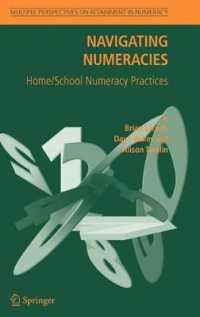Full Description
The Routledge Handbook of Endangered and Minority Languages addresses the urgent need for comprehensive language documentation and a deeper understanding of language identity, emphasizing the preservation of endangered languages.
This book argues that safeguarding linguistic diversity enriches global cultural heritage and knowledge. By meticulously documenting minority languages, we not only preserve words and grammar but also the unique cultural narratives they carry. The book also introduces new language learning paradigms that recognize the complexities of multilingual societies, advocating for educational systems that embrace the diverse linguistic backgrounds of students. These approaches aim to create more inclusive and effective learning environments by valuing multilingualism. Exploring the fluid nature of language identity, the book examines how sociopolitical contexts and technology influence it, calling for policies that respect linguistic rights and promote social cohesion. It presents case studies from diverse regions, including the Pacific, Nordic countries, Cornwall, Pakistan, the UAE, and more, offering practical strategies for language preservation and revitalization.
Groundbreaking insights into the use of digital tools, social media, and AI in language preservation, along with the challenges and successes of various revitalization efforts, make this book a valuable resource for researchers, educators, and policymakers committed to fostering linguistic diversity and equity worldwide.
Contents
Section I: Endangered and Minority languages in the New Global Context 1. Preserving indigenous languages in the Pacific region: The role of key stakeholders 2. Language Revitalization Case Studies from the Nordic Countries 3. Celtic Lessons: Revitalising Cornish through the Education System 4. Basque and Occitan in the new global context: some reflections on language coexistence in multilingual education 5. Redrawing Language Boundaries: Nurturing Arabic in the United Arab Emirates 6. How Is Alsatian Written?: A Case Study of the Linguistic Landscape in Strasbourg 7. The Global Language - Latin Section II: Technology, Media, and Revitalization 8. The role of language attitudes and ideologies in minority language learning and language revitalization: Perspectives of Polish migrants learning Welsh 9. Learning from Language Revitalization Movements to Promote Uyghur Language Resilience in Diaspora 10. The role of new media in maintaining endangered languages: Insights from Igbo 11. Challenges of Language Survival in Digital Perspectives: Case and Context of India 12. Indigenous Artificial Intelligence: Virtual and Augmented Reality as Tools in the Cultural Preservation and Education of Endangered and Extinct Languages Section III: Language Policy, Ideology, and Multilingual Education 13. "Speak Standard Mandarin, Write Standard Characters": Mandarin language promotion and its effect on minority languages in China 14. Ideological monolingualism and the languages classroom in England 15. Multilingualism in Minority Schools: New Realities 16. Learning the Neighbor's Language: Regional and minoritized languages as a resource in the European educational context 17. Challenging standard language ideology in L2 learning contexts for endangered and minority languages 18. Turning Toward Plurilingualism through a Focus on Place 19. Border Culture Identity 20. Textual phenomena addressing youth: Orthographic, typographic, and ideological aspects of the Greek-Cypriot dialect 21. "I already know where that place is ...": The Educational Linguistic Landscape of a Language at Risk Section IV: Learning Endangered and minority Languages 22. Artificial Intelligence Assisted Language Learning (AIALL) for ALL in the New Global Context: Threats and Opportunities 23. Raising intercultural awareness in European University Alliances: opportunities, challenges and limitations 24. Rhizomatic approaches: A response to hierarchies, linearity and isolation in language learning 25. The non-fiction picturebook as a tool for (re)constructing children's and teachers' representations of endangered languages: Design and results of a multimodal educational project for the Aragonese language 26. Modularity as a Practical Approach to Teaching and Learning About the LGBTQIA+ Community in Japan and Beyond








